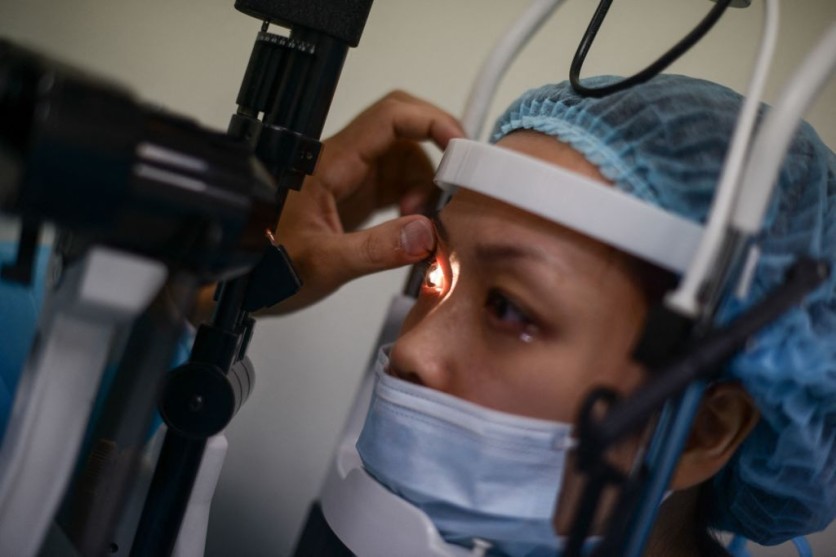A group of scientists associated with Mass Eye and Ear, a member of Mass General Brigham, have turned their attention to addressing a prevalent medical issue. They have made significant progress toward finding a potential solution for repairing cornea damage.

Treating Cornea Damage Using Own Stem Cells
Researchers introduced a groundbreaking approach known as the "cultivated autologous limbal epithelial cell transplantation" (CALEC) procedure.
Interesting Engineering reported that this method involves using stem cells from a patient's healthy eye to effectively restore the surface of the affected cornea.
This method holds the promise of revitalizing vision by addressing cornea damage at its core. In a Phase I trial of the study involving four patients who had suffered significant chemical burns in one eye, the treatment demonstrated both safety and feasibility.
According to a statement released by the research team, patients monitored over a 12-month period experienced remarkable restoration of their cornea surfaces.
Among them, two individuals successfully underwent corneal transplants, while the remaining two reported substantial enhancements in their vision without requiring any additional interventions.
Ula Jurkunas, MD, who serves as the associate director of the Cornea Service at Mass Eye and Ear and holds the position of associate professor of ophthalmology at Harvard Medical School, conveyed her insights on the matter.
In the unfolding narrative of their research, the preliminary findings provide a glimmer of hope for individuals who have endured the bleak reality of irreversible vision loss and the persistent anguish stemming from severe cornea injuries.
A pervasive challenge faced by cornea specialists is the scarcity of treatment alternatives possessing a robust safety record, particularly for patients grappling with chemical burns and injuries that impede the possibility of an artificial cornea transplant.
The researchers' optimism lies in the potential of CALEC to become a beacon of solution. With further comprehensive study, they envision CALEC bridging the indispensable treatment gap that has long persisted, offering relief to those left without recourse.
Also Read : Eye Disease Treatment and Prevention Through Smart LED Contact Lenses: How Effective Is It?
Restoring Sight Through Stem Cell Treatment
The process entailed the extraction of stem cells from the patient's unaffected eye through a minor biopsy. Subsequently, these cells underwent a phase of expansion and cultivation on a graft.
In a span of two to three weeks, NBC News reported that the graft involved in the CALEC procedure returned to the medical center, where it found its purpose. The transplantation took place in the eye afflicted with corneal damage, marking a crucial stage in the journey toward restoration.
Delving into the intricate nuances of perfecting this pioneering technique, Jerome Ritz, the executive director of the Connell and O'Reilly Families Cell Manipulation Core Facility at Dana-Farber, and a professor of medicine at Harvard Medical School, shared his insights.
"It was challenging to develop a process for creating limbal stem cell grafts that would meet the FDA's strict regulatory requirements for tissue engineering," he said.
With the development and execution of this procedure, he noted that there was a sense of deep satisfaction in witnessing promising clinical results emerge within the initial group of patients enrolled in the trial.
In anticipation of the forthcoming trial phase, the researchers are gearing up to monitor 15 patients who have also undergone the CALEC procedure. Over an observation period of 18 months, EurekaAlert reported that they would assess the comprehensive effectiveness of the treatment.
The researchers hold a vision for the CALEC procedure to evolve into a viable treatment choice. For individuals who were previously faced with enduring prolonged impairments due to the unavailability of suitable treatment options for their severe injuries, the CALEC approach could emerge as a transformative solution.
Related Article : Health Canada Warns About Eye Drops Labelling Errors-Leading To Massive Recall; What Should You Do?

![Apple Watch Series 10 [GPS 42mm]](https://d.techtimes.com/en/full/453899/apple-watch-series-10-gps-42mm.jpg?w=184&h=103&f=9fb3c2ea2db928c663d1d2eadbcb3e52)



